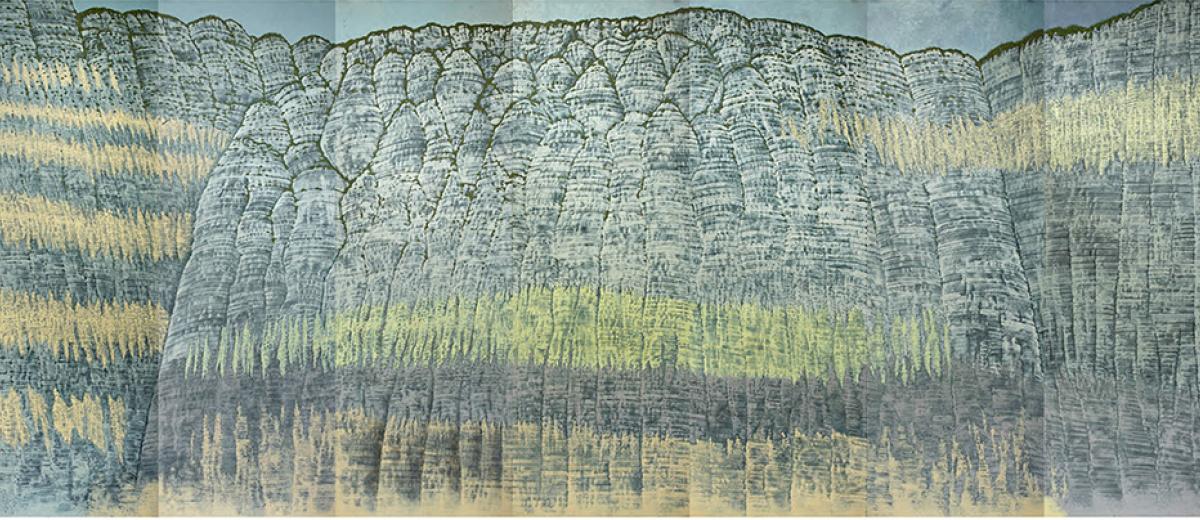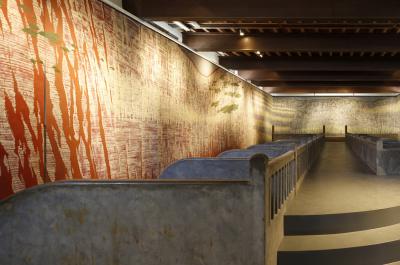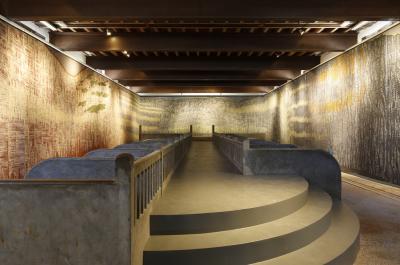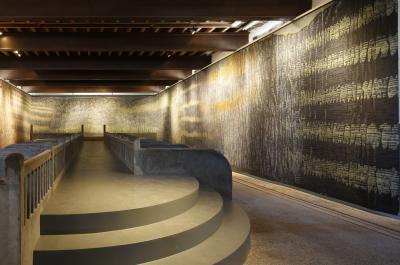Le Fenil Gallery
Stéphane Erouane Dumas
"Cliffs"
published at 15/11/2018

Stéphane Erouane Dumas’s work reveals the marks of time visible in the different strata on the chalky cliffs in Normandy, which he has been relentlessly painting for years. Into the subject matter he weaves a composition pitted with crevices that are given subtle depth through the play of light and varying tonality. Over time a strange alchemy has emerged between the painter and his subject – captured on the canvas using pigments, marble powder and hide glue that are by turns scratched and rubbed out then worked over to obtain the desired variations of transparency and matter. “My technique is visual above all. I have to be able to feel the power of the subject – the subject needs to give something to me so that I can give in turn, thus offering up my own vision.” Stéphane Erouane Dumas
“Stéphane Erouane Dumas’s work has absence in its grasp. A bare, avid absence which makes whatever revolves blindly around the illusions of the world vanish within. Each painting perpetuates a single moment in an accomplishment that is always imminent, always put off. Something unsettling and unprecedented takes root, akin to the unthinkable beginnings of the world. In the beginning, there were cliffs, and the slow breathing of the outside ... In the veils of the work, in its many folds, drawn-out tension can be glimpsed – the sheer density of the ultimate matter – right down to its immobile creaking, the muffled presence of convulsive springs, suddenly gushing forth after centuries underground, where the hidden forces of the deep mind reside, under the weightless scalpel of distant glimmers.” Christian Noorbergen, 2010.
“The artist is inspired by his familiarity with the colossal features of the Seine Maritime landscape, which encourages him to come up with a monumental project out of all proportion. Much like the Renaissance artists who were obliged to invent the process that would enable them to design their frescoes before even picking up a single brush, Dumas has spent many weeks developing a system of scaffolding, cables and pulleys for painting twenty-nine panels measuring one metre thirty wide and almost four metres high in his studio in Paris and the one in Normandy, for testing paper qualities before settling for the three hundred gram Canson Montval, and for carefully documenting the scattered elements so as to connect them as closely as possible to the desired graphic undulation. This work took two years to complete. Dumas began with graphite line drawings and then a colour template. He then got down to painting: after long hours spent in the studios, the gigantic panels of oil painting – vertical pieces of this giant puzzle thirty-eight metres long – finally stood complete, one after the other in an abstraction the colour of chalk, the red sun, the white sun and lichen.” Alice Morgaine
BIOGRAPHICAL NOTES
Stéphane-Erouane DUMAS
FRANCE

Born in Boulogne Billancourt, France, on 12 April 1958, Stéphane Erouane Dumas graduated from the École Nationale Supérieure des Arts Décoratifs de Paris. He splits his time living and working in Paris and Normandy.
He has also illustrated a number of Fata Morgana publications including Les Rougets by André Pieyre de Mandiargues in 2004, L’enfant qui ne comprend pas by Henri Thomas in 2006, Parfums by Eryck de Rubercy (2009) and Écrit à Carrouge by Gustave Roud (2011).
An immensely talented artist and painter, he has often been invited to present his work across Europe for personal exhibition.


